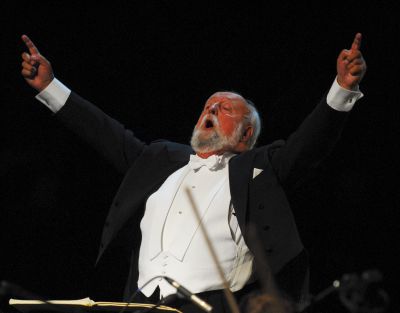Bronisław Huberman: From child prodigy to resistance fighter against National Socialism

Huberman did, however, intend to appear with the Palestine Orchestra in the following concert season, in autumn 1937. But when his plane crash landed on the island of Sumatra during a tour of Australia and Asia at the beginning of October 1937, Huberman suffered such severe injuries to both arms that he was unable to appear. He did not return to making music with the orchestra that he had founded until December 1938 when he appeared under the leadership of the Hungarian conductor Eugen Szenkar (1891-1977). Szenkar was also a victim of the political situation in Europe. In 1924, the principal conductor of the Cologne Opera had been removed from office by the National Socialists and had fled to Vienna. Invited to Moscow in 1934, where he had led the State Philharmonic Orchestra since that time, he was expelled from Russia in 1937 during the Stalinist purges. In 1938/39, he led the fourth subscription concerts of the Palestine Orchestra and four concerts in Cairo and Alexandria during the second Egypt tour.
Huberman also carried out guest appearances in numerous European cities. In February and March 1940, he travelled to be “his” orchestra for the last time and together they gave concerts in Palestine and Egypt. The course of the war meant that he was unable to return to Switzerland from a concert tour to South Africa, travelling instead to the US in August 1940. There he continued to give concerts until summer 1945. After the end of the Second World War, he fulfilled his concert obligations and completed tours in Europe, the US and Cuba but became so seriously ill after his last public concert in Zurich in April 1946 that he was no longer able to perform. He died on 16 June 1947 in his house in Corsier in the Swiss canton of Waadt. Thanks to his founding of the orchestra, an estimated six hundred people were able to be saved from persecution and death between 1936 and 1939.[52]
After its frantic start, the Palestine Orchestra enjoyed great popularity in Palestine and undertook a tour to Egypt every year. However, when the Second World War broke out, it ran into financial difficulties because foreign conductors stayed away and the local orchestra leaders were unable to convince musicians or audiences to support it. Inevitably, the financial donations from Europe failed to materialise. The tense economic situation meant that most of the orchestra members also had to play in cafés and hotels. Nevertheless, in 1942 and 1943 more than two hundred concerts were still being held per season. The orchestra also released itself from Huberman’s influence. His absence and subsequent ill health meant that he was unable to look after it any more anyway. The funding system of the international trust gradually collapsed because European and American patrons withdrew their patronage. In 1946, the orchestra committee elected by the musicians decided on a new organisational form financed by municipal and state institutions in Palestine. After the state of Israel was created in May 1948, the orchestra was definitively renamed the Israel Philharmonic Orchestra[53] at the beginning of the 1948/49 concert season and is today considered one of the leading ensembles in the world.
Axel Feuß, September 2020












